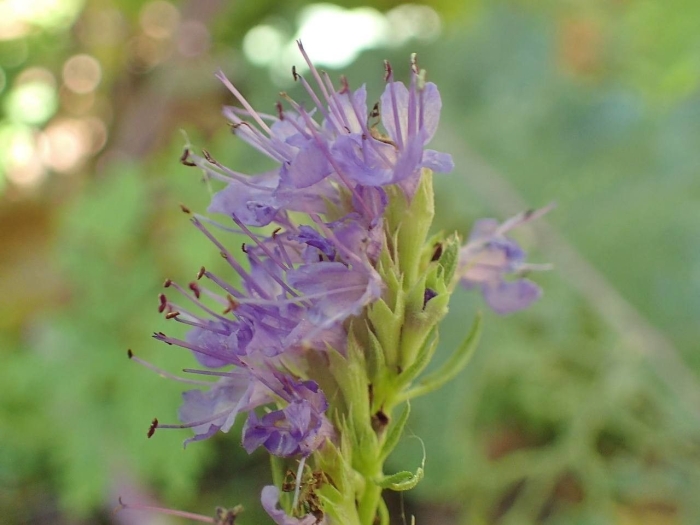Hyssop
(Hyssopus officinalis)
Hyssop (Hyssopus officinalis)
/
/

Yoan MARTIN
CC BY-SA 4.0




















































Estimated Native Range
Summary
Hyssop is valued for its ornamental and culinary uses, as well as its historical medicinal applications. The showy flowers and pleasant scent make it a popular choice for herb gardens, borders, and as a companion plant in vegetable gardens to attract pollinators. It is also used to flavor liqueurs, sauces, and stews. Hyssop prefers well-drained, chalky or sandy soil and requires little maintenance once established. It is drought-resistant, making it suitable for xeriscaping. However, it can be susceptible to root rot in poorly drained soils and may suffer from foliar diseases in humid climates.CC BY-SA 4.0
Plant Description
- Plant Type: Subshrub, Herb
- Height: 1.5-2 feet
- Width: 1-1.5 feet
- Growth Rate: Moderate
- Flower Color: Blue, Pink, Purple
- Flowering Season: Summer, Fall
- Leaf Retention: Semi-Deciduous
Growth Requirements
- Sun: Full Sun, Part Shade
- Water: Low, Medium
- Drainage: Medium
Common Uses
Bee Garden, Border Plant, Butterfly Garden, Deer Resistant, Drought Tolerant, Edible*Disclaimer: Easyscape's listed plant edibility is for informational use. Always verify the safety and proper identification of any plant before consumption., Erosion Control, Fragrant, Low Maintenance, Potted Plant, Rock Garden, Salt Tolerant, Showy Flowers, Street Planting
Natural Habitat
native to Southern Europe, the Middle East, and the region along the Caspian Sea
Other Names
Common Names: Common Hyssop, Garden Hyssop, Ysop, Arznei-Ysop, Hisopo, Hysope Officinale, Hysope, Hissopo, Isop, Shen Xiang Cao, Issop Obyknovennyj
Scientific Names: , Hyssopus officinalis, Hyssopus officinalis subsp. angustifolius, Hyssopus officinalis var. vulgaris, Hyssopus officinalis f. officinalis, Hyssopus schleicheri, Thymus hyssopus,
GBIF Accepted Name: Hyssopus officinalis L.